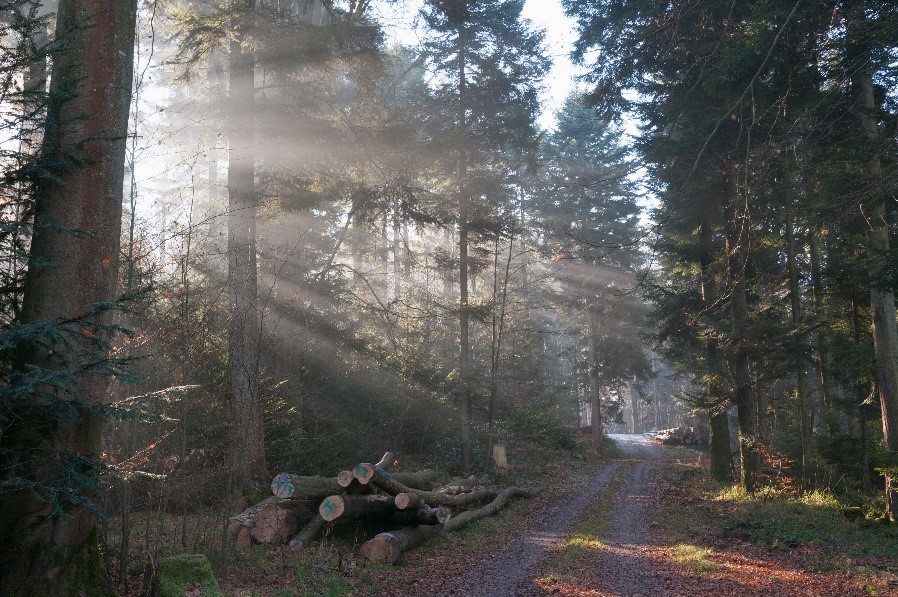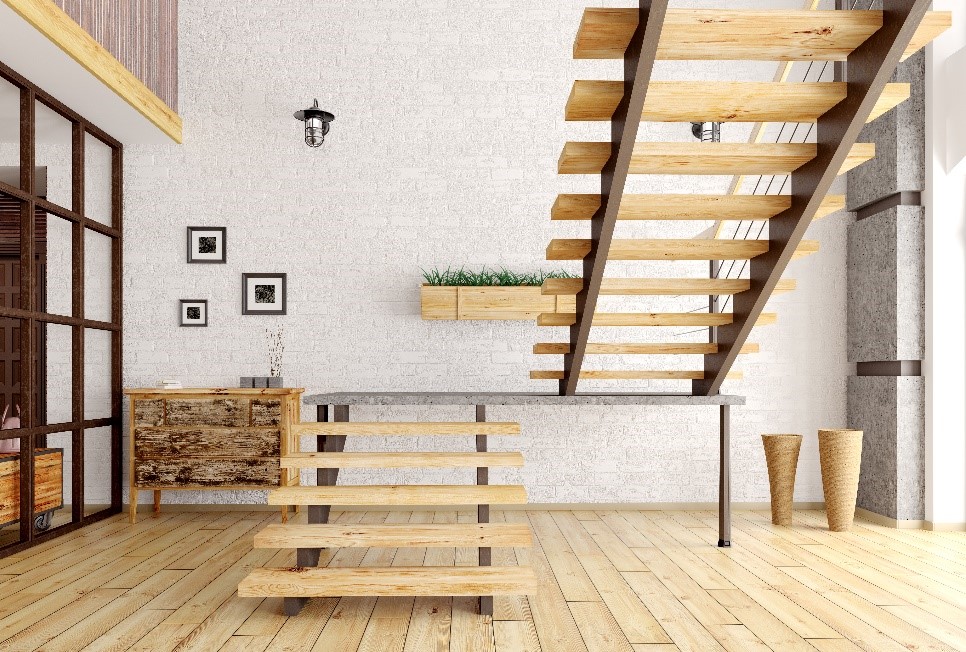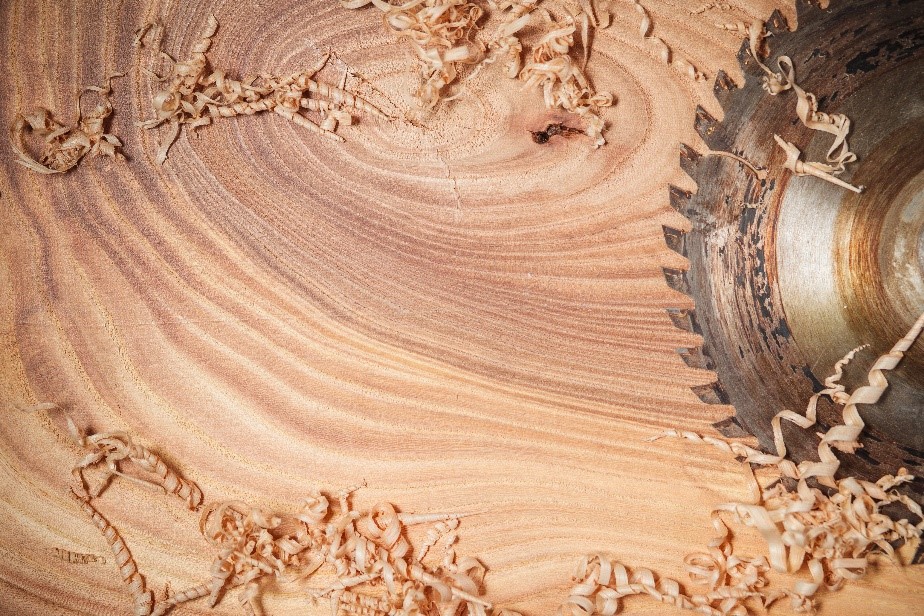The differences between hardwood and softwood
Contents |
Introduction
Many believe that hardwood is a harder and denser material than softwood, but this is not necessarily the case. They are both used for a range of structural and decorative projects. For example, Balsa Wood is considered a hardwood but is one of the least dense woods and one of the lightest.
How are they distinguished?
Several types of construction call for a variety of timbers; hardwood and softwood but they are typically distinguished in terms of their plant reproduction. Many people think they are differentiated through their end use or appearance, but this is not the case. All trees reproduce by producing seeds, but these timbers originate from separate seed structures.
Hardwood originates from a tree which loses its leaves annually; many species are deciduous, whereas softwood, from a conifer, remains evergreen. Hardwood tends to grow more slowly and is therefore denser.
Properties and uses of hardwood
Hardwood comes from Angiosperm trees, which are trees with enclosed seeds These are also sometimes referred to as 'flowering plants' and can produce many types of timber, such as maple, oak and walnut.
The intricate structure of hardwoods is often much slower to grow because of their complexity. The dominant feature which hardwoods have, which separate the two prominently, is the presence of vessels, or pores. These vessels differ in size, shape and structure.
As the name suggests, the tree is commonly harder than a softwood. There is a common misconception that this is the only variance, but there are other differences of note. In both groups, there are dissimilarities of denseness in woods, with a range in density in hardwoods, also including that of softwoods.
Properties and uses of softwood
Softwood comes from a gymnosperm tree, which is a tree with uncovered seeds that reproduce by forming cones which emit pollen. These pollens are then spread onto other trees by the wind. Pollinated trees form naked seeds are then dropped on the ground or borne to the wind so that trees can be grown elsewhere.
Softwood makes up approximately 80% of the worlds production of timber and is typically used in construction, as a structural form and as a finishing timber. In both groups, there is an enormous variation of hardness. The woods of Longleaf pine and Douglas fir are much harder in the mechanical sense than several hardwoods, but are technically softwoods.
Some examples of softwoods include Pine, Redwood and Larch.
The terminology of hardwood to softwood is not necessarily correct, as evergreens tend to be less dense than deciduous trees which makes them easier to cut.
--G&S Specialist Timber 15:58, 12 Apr 2017 (BST)
Related articles on Designing Buildings Wiki
- 11 things you didn't know about wood.
- A guide to the use of urban timber FB 50.
- Bamboo flooring.
- Birch wood.
- Chip carving.
- Cross-laminated timber.
- Definition of tree for planning purposes.
- Engineered bamboo.
- Glulam.
- Hardwood.
- Janka hardness rating scale.
- Laminated veneer lumber LVL.
- Physical Properties of Wood.
- Plywood.
- Softwood.
- Testing timber.
- The Differences Between Engineered Flooring and Solid Hardwood Flooring.
- Timber.
- Timber preservation.
- Timber vs wood.
- Types of timber.
- Walnut.
Featured articles and news
RTPI leader to become new CIOB Chief Executive Officer
Dr Victoria Hills MRTPI, FICE to take over after Caroline Gumble’s departure.
Social and affordable housing, a long term plan for delivery
The “Delivering a Decade of Renewal for Social and Affordable Housing” strategy sets out future path.
A change to adoptive architecture
Effects of global weather warming on architectural detailing, material choice and human interaction.
The proposed publicly owned and backed subsidiary of Homes England, to facilitate new homes.
How big is the problem and what can we do to mitigate the effects?
Overheating guidance and tools for building designers
A number of cool guides to help with the heat.
The UK's Modern Industrial Strategy: A 10 year plan
Previous consultation criticism, current key elements and general support with some persisting reservations.
Building Safety Regulator reforms
New roles, new staff and a new fast track service pave the way for a single construction regulator.
Architectural Technologist CPDs and Communications
CIAT CPD… and how you can do it!
Cooling centres and cool spaces
Managing extreme heat in cities by directing the public to places for heat stress relief and water sources.
Winter gardens: A brief history and warm variations
Extending the season with glass in different forms and terms.
Restoring Great Yarmouth's Winter Gardens
Transforming one of the least sustainable constructions imaginable.
Construction Skills Mission Board launch sector drive
Newly formed government and industry collaboration set strategy for recruiting an additional 100,000 construction workers a year.
New Architects Code comes into effect in September 2025
ARB Architects Code of Conduct and Practice available with ongoing consultation regarding guidance.
Welsh Skills Body (Medr) launches ambitious plan
The new skills body brings together funding and regulation of tertiary education and research for the devolved nation.
Paul Gandy FCIOB announced as next CIOB President
Former Tilbury Douglas CEO takes helm.
UK Infrastructure: A 10 Year Strategy. In brief with reactions
With the National Infrastructure and Service Transformation Authority (NISTA).

























